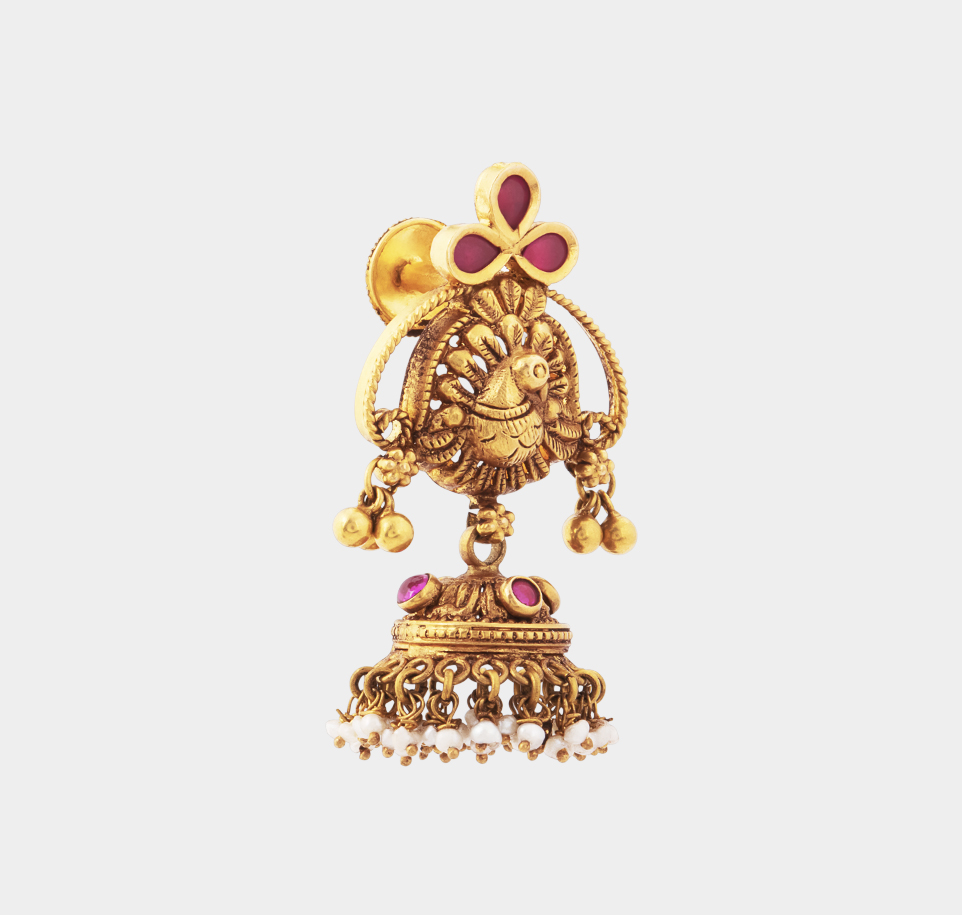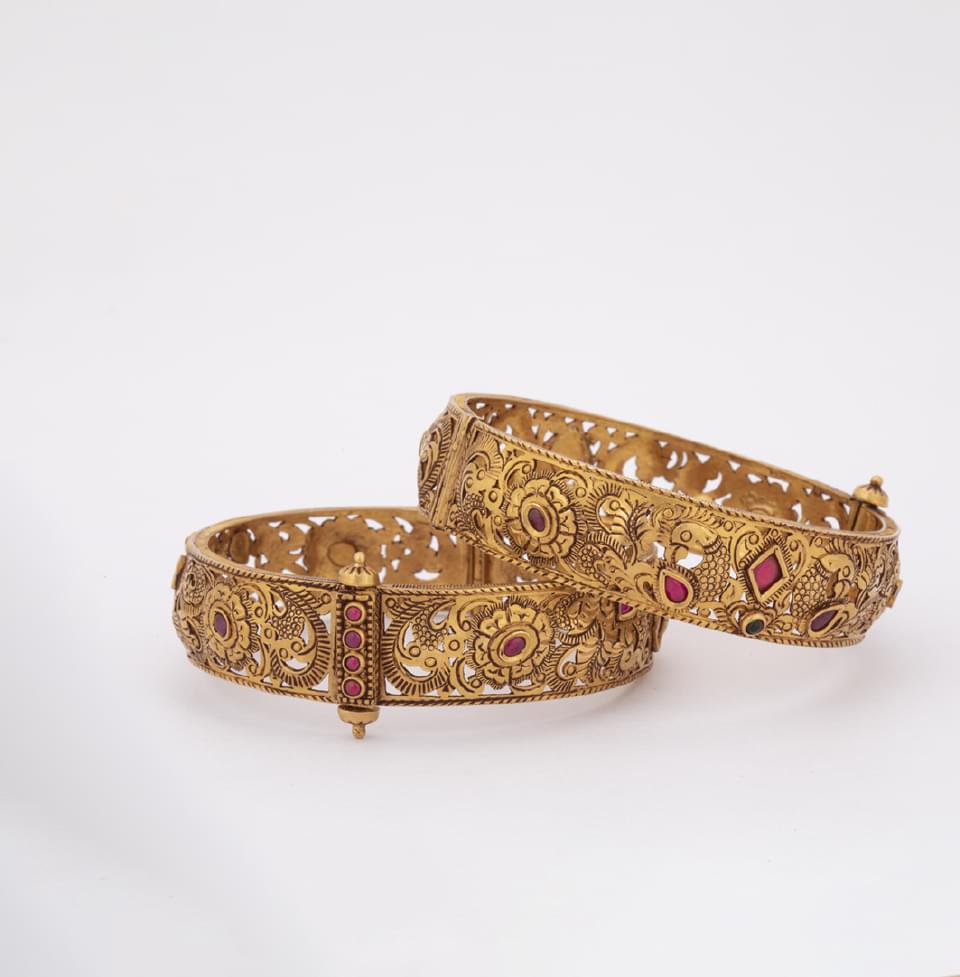Celebrate the grandeur of South Indian royalty
-
South Indian jewellery, also known as temple jewellery, traces its roots to the 9th Century AD. While it is the general notion that South Indians don’t prefer glitz, nothing could be farther from the truth. Temple jewellery that rightly received its name refers to designs inspired by the age-old jewellery that deities in various temples were decked up with. In the olden times, the rulers of our famed lands supported jewellery craftspeople, who often came up with extravagant designs for both the royalty and the deities. In recent times, these jewellery designs are increasingly being adapted to modern sensibilities without losing the grandeur that they are renowned for. There probably isn’t anyone who wouldn’t be enticed to own these adornments. While there are multiple renditions of temple jewellery, there are a few types of jewellery with illustrious motifs that are loved by all.
1. Lakshmi Haaram

This is a long chain that is made of closely linked motifs and a huge pendant of the Goddess Lakshmi as the centrepiece. Motifs of Goddess Lakshmi, elephants, peacocks or floral patterns are lovingly handcrafted and linked by skilled artisans, which result in a chain that’s a sight to behold.
2. Maalai

Similar to the haaram but a tad bit subtler, the maalai is a type of temple jewellery that is shorter and often-times without the pendant. Instead, the maalai is made of mango motifs closely linked together or with coins dangling, as in the case of the immensely popular Kaasu Maalai. Red stones or rubies are embellished in these ornaments to increase their allure.
3. Attigai

This kind of chain resembles a choker but in a purely traditional way. A short chain worn very close to the neck, it is generally inset with kemp stones of multiple colours and a grand pendant as its centre of attraction.
4. Vanki or Vaangi

These are armlets that were originally in an inverted V-shape but now have evolved into circular bands as well. Worn on the upper arms, the Vanki symbolises strength and is a magnificent addition to traditional sarees draped with short-sleeved blouses. Vankis are inset with rubies, emeralds or diamonds and engraved with motifs of goddesses, peacocks, elephants or serpents.
5. Valayal (aka Gaajulu / Kadas)

While daily wear gold bangles are simply etched and thinner, temple jewellery is chunkier in its design. Heavy gold bangles with traditional motifs of goddesses, divine animals, birds, and other floral patterns are engraved and embellished with rubies, emeralds, pearls, diamonds, and more.
6. Nethi Chutti (aka Maang Tikka)

A significant part of any bridal trousseau, the Nethi Chutti is an ornament that is worn on the forehead, representing the union of a man and a woman. From thick bands covering the entire forehead with kemp or Kundan crafting, diamonds or gemstone-embedded designs to layered and beaded Nethi Chuttis, this accessory is a must for brides to shine in all their glory.
7. Jimmiki

The favoured ear adornments, Jimmikis are dangling bell or chandelier-shaped earrings, with heavy engravings or embellishments. Accentuating a woman’s face beautifully, they are considered a symbol of balance.
8. Oddiyanam

The famed waist belts that add an ultimate touch of magnificence to a woman’s outfit, especially when paired with Kanjeevaram sarees, the Oddiyanams are symmetrical belts carved in gold, with engravings of goddesses, divine animals, birds, and embellishments of diamonds, rubies, or emeralds. They accentuate a woman’s hip beautifully.
The skill and dexterity that goes into making authentic temple jewellery are unsurpassed. Owning these pieces of jewellery goes beyond raising one’s status and is pure joy because it makes the wearer feel like royalty. ANS Jewelry Swarnapuri offers a wide range of temple jewellery to choose from. Jewellery can also be made to order, so contact us today!

